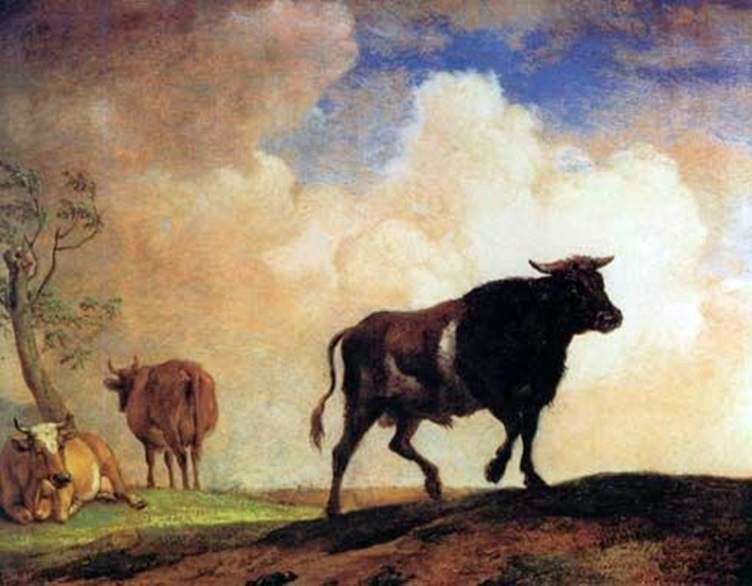
In the history of Dutch art, Paulus Potter holds a special place. His landscape compositions with a uniform distribution of light, clear clarity of forms, some individualization of phenomena and objects are largely traditional for Holland. Traditional and creative biography of the artist. He studied with his father P. S. Potter, worked in Delft, where in 1646 he became a member of the painters guild, then worked and lived in The Hague and Amsterdam. What distinguishes the landscapes of Potter from his contemporary works?
Initially, the landscape appeared as a background in subject paintings, but gradually in the work of painters it became an independent genre. Potter made the return trip: from the landscape panorama he returned to the plot work. “Heroes” of his paintings were animals, which he imprinted on a watering place, on a pasture or farm. Thus, a new genre of landscape painting – a landscape with an animal. Potter belongs to the first animal painters in the history of European art. Other famous works: “Young Bull”. 1647. Mauritshuis, The Hague; “Landscape with a herd.” 1653. Rijksmuseum, Amsterdam; “Chain Dog”. OK. 1639. Hermitage, St. Petersburg.
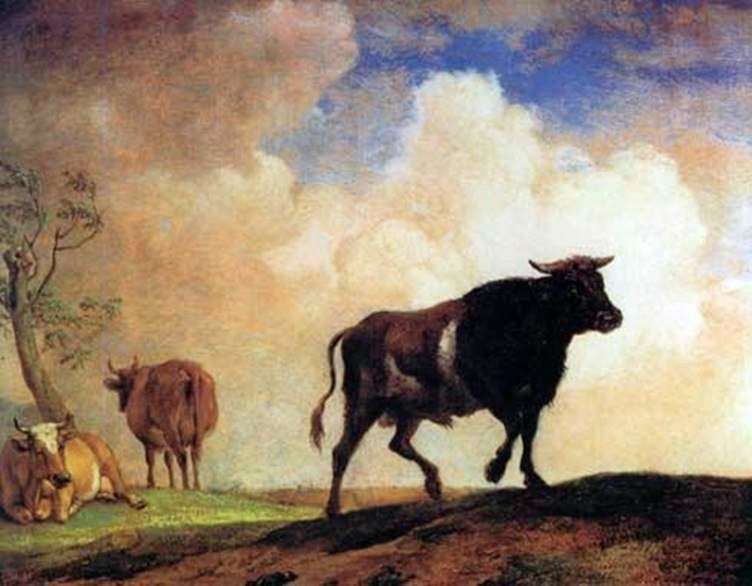 Bull – Paulus Potter
Bull – Paulus Potter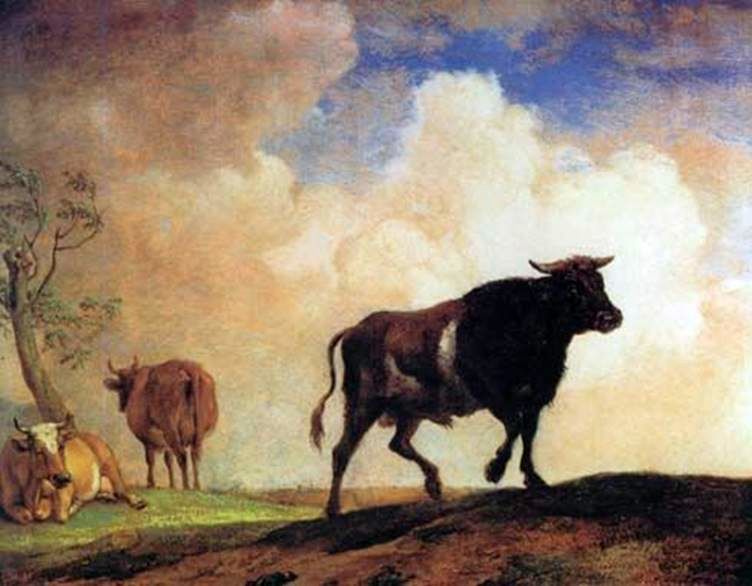 Taureau – Paulus Potter
Taureau – Paulus Potter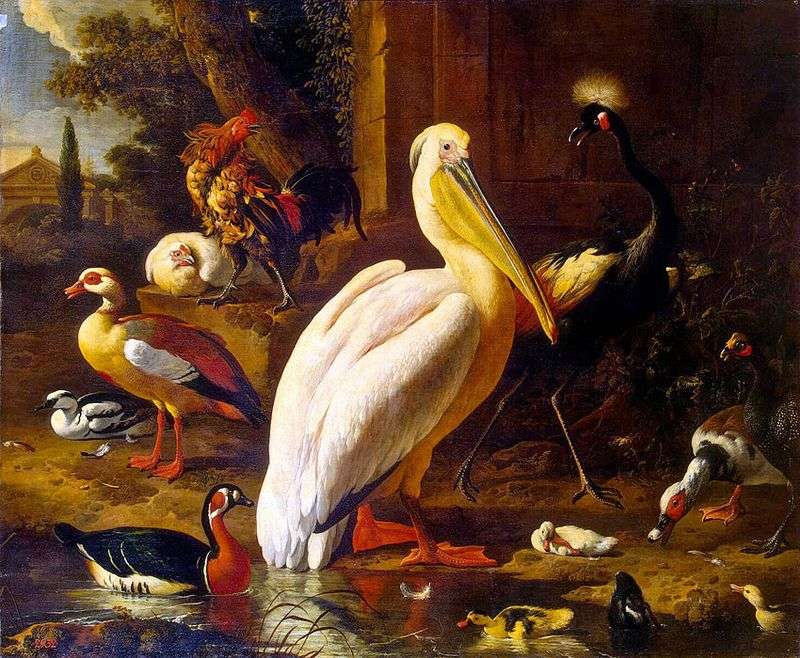 Birds in the park by Melchior de Hondecuiter
Birds in the park by Melchior de Hondecuiter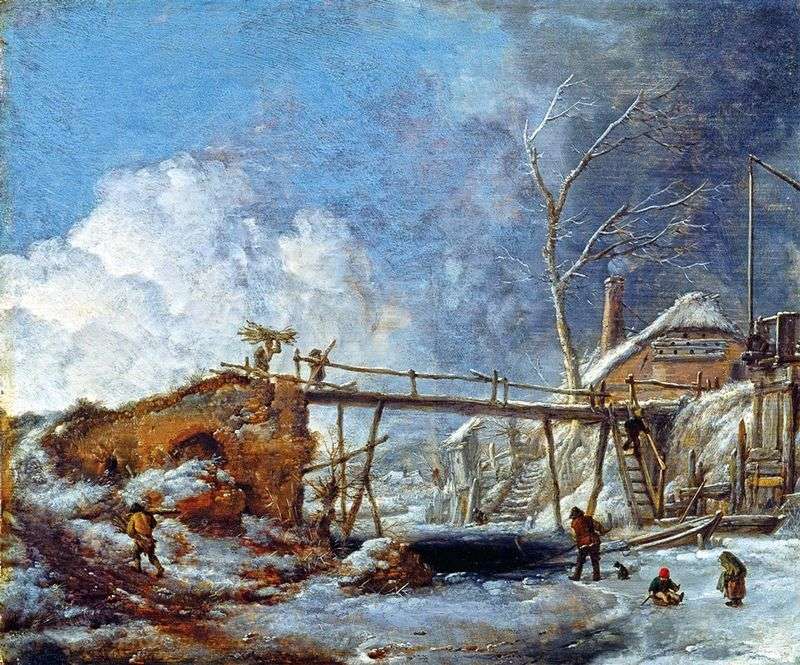 Winter landscape with a wooden bridge by Phillips Wouverman
Winter landscape with a wooden bridge by Phillips Wouverman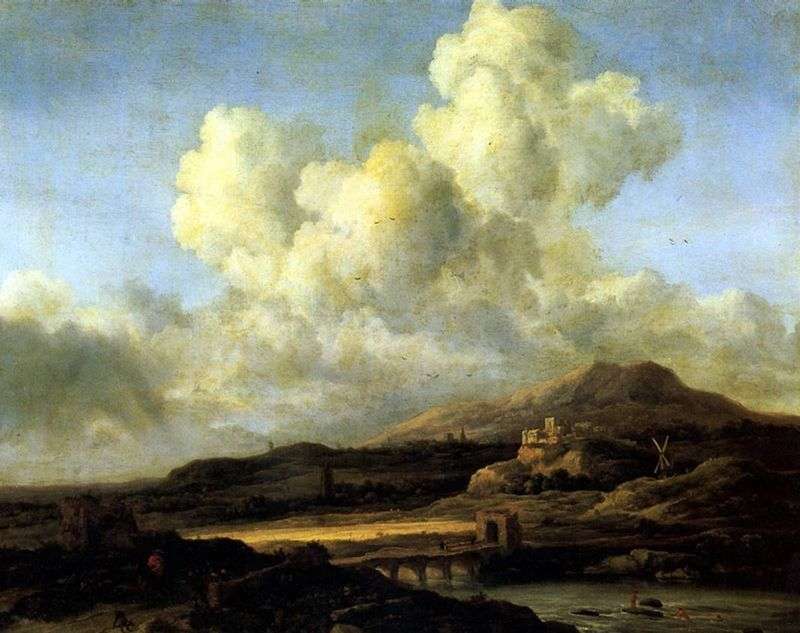 Ray of Sun by Jacob van Ruysdal
Ray of Sun by Jacob van Ruysdal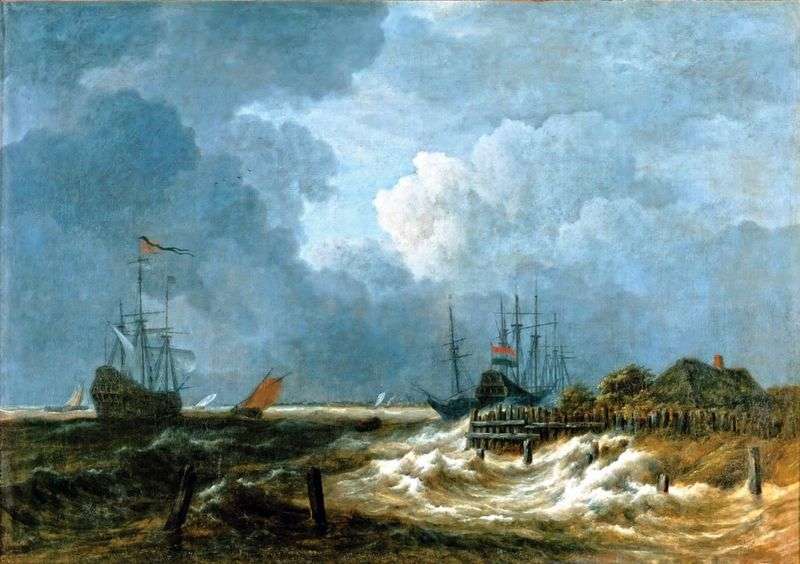 Breakwater by Jacob van Ruysdal
Breakwater by Jacob van Ruysdal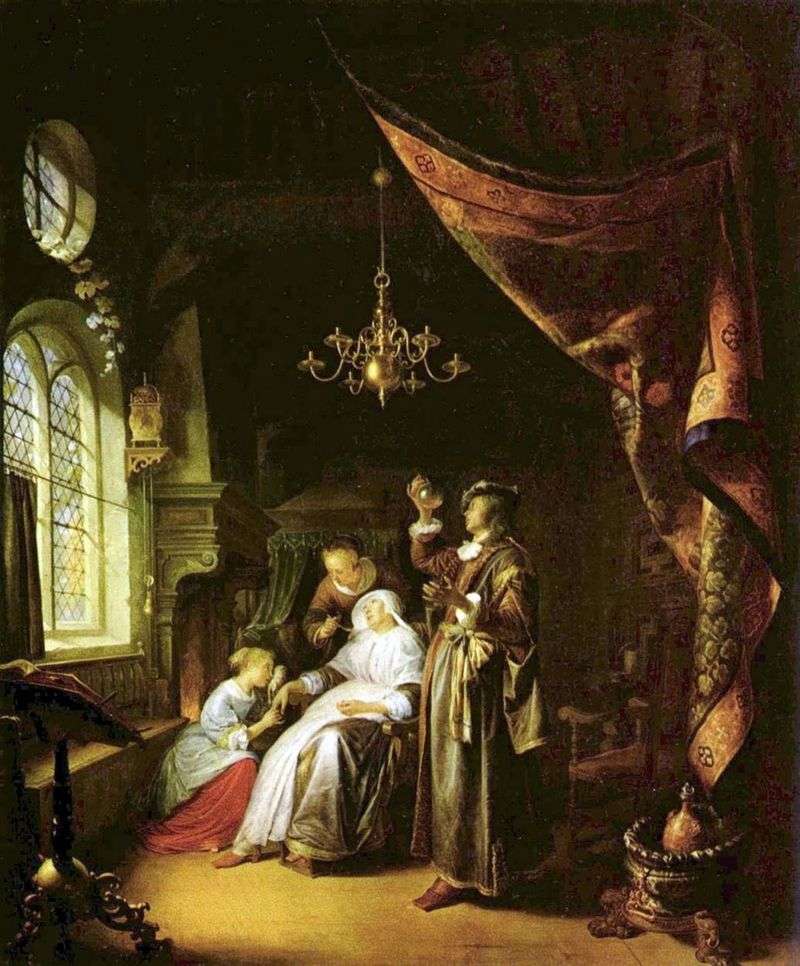 Patient and doctor by Gerard (Gerrit) Dow
Patient and doctor by Gerard (Gerrit) Dow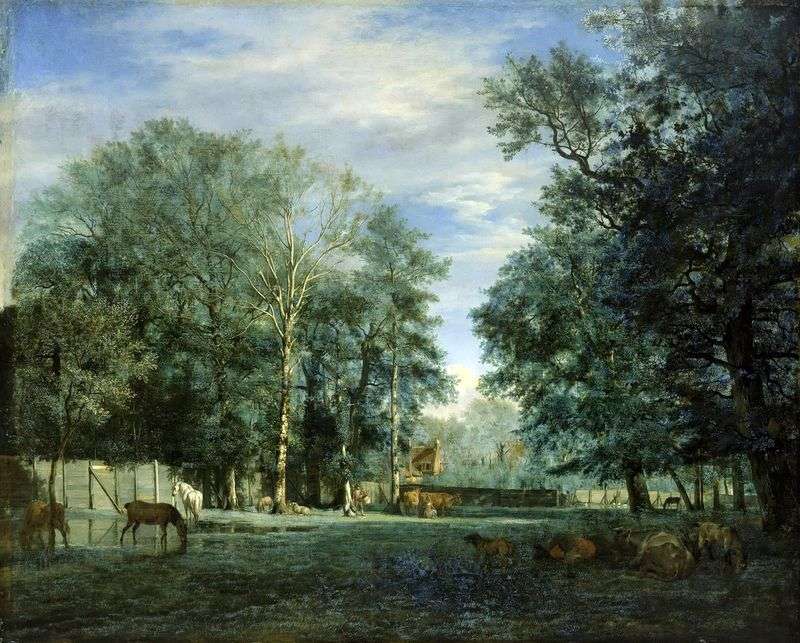 Farm by Adrian van de Velde
Farm by Adrian van de Velde